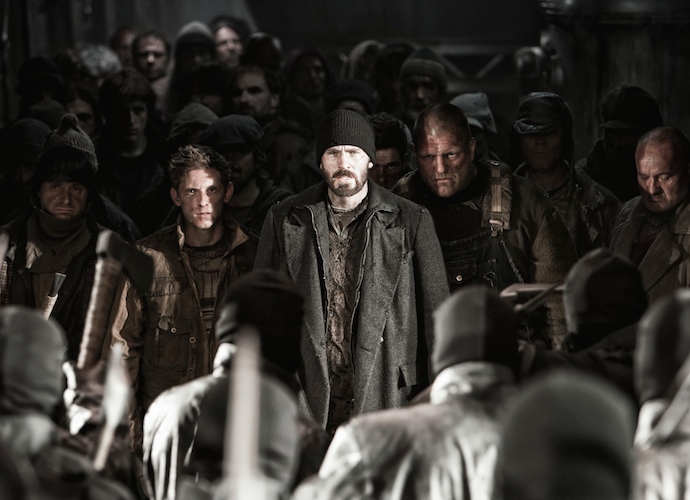‘Snowpiercer’ Blu-Ray Review: Bong Joon-ho’s American Debut Leaves Something To Be Desired

2.5/5
Snowpiercer is director Bong Joon-ho’s American movie debut, but opened quietly due to a lack of proper advertising, which is surprising considering the many big names in the film and its quality. Despite some questionable story decisions, Snowpiercer is one of the better sci-fi movies to come out in recent years.
The plot is this: in 2014, an attempt to counteract global warming has caused an ice age and wiped out most of humanity. The only people left on Earth are the people of the Snowpiercer, a train powered by a perpetual-motion engine. By 2031 a class system has been established with the wealthy near the front and the poor near the back. The ham-fisted political pretensions that orbit the film with the subtlety of a butcher are worth a few heavy eye-rolls. The environmental and economic social commentary is geared left, of course, as this is not only Hollywood but a Weinstein production, and it’s the usual shtick we’ve heard time and again – so all of this can feel derivative, if not a total flashback to last year’s truly tedious Elysium (along with some tonal and design notes from the Matrix sequels). It’s confusing as to why humanity is broken up this way. The poor seem to serve no purpose as a labor class since apparently no one is working. There’s a lot going on in the train (some of it bizarre and senseless, some of it really interesting) and it seems likely that there would be a great need for maintenance crews to make sure all the amenities (and the train itself) could still work. The perpetual motion engine, then, becomes a little strange since it takes care of all the problems, though children are needed to work the thing because…plot? Likely it was just to render the “costing an arm and a leg” concept from symbolism to blunt literalism.
There is an undeniably different vibe at play in Kelly Masterson’s screenplay and Joon-ho’s direction that makes Snowpiercer familiar, but fresh enough to warrant a look. However, the world the film takes place in asks too much of its audience. How and why are there clairvoyants? How do they have an unlimited supply of food? Where did all of the cattle and vermin come from? Is there cloning going on? If so, how? How does this train maintain course when so much of the planet has been destroyed? This may have all been explained in the original French graphic novel Le Transperceneige, but if a film needs extra materials to explain itself then it has fundamentally failed in its attempts to tell a complete story.
That said, the film isn’t entirely a wash. Despite some script failings, the cast does well enough for itself, especially with Tilda Swinton and John Hurt providing strong and grounding performances. Chris Evans was also rather surprising in Snowpiercer as well. His film roles to date haven’t exactly been difficult tasks, vacillating between superheroes and rom-com heartthrobs, but here he sheds most of that baby-faced charm and takes up a more weathered, put upon look.
The Blu-Ray comes loaded with hours of special features included making-of docs, interviews, commentary, storyboards and an animated prologue. The two making-docs –The Birth of Snowpiercer and Transperceneige: From the Blank Page to the Black Screen – are the winners among these features, and highlight how much effort was put into what was, essentially, a missed opportunity.
RELATED ARTICLES
Get the most-revealing celebrity conversations with the uInterview podcast!





Leave a comment